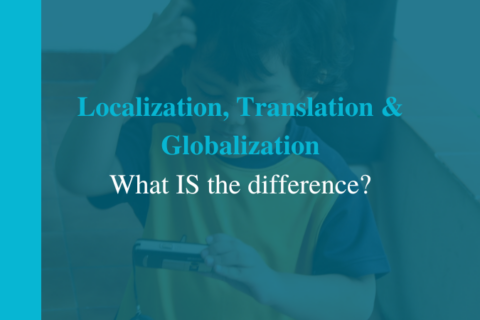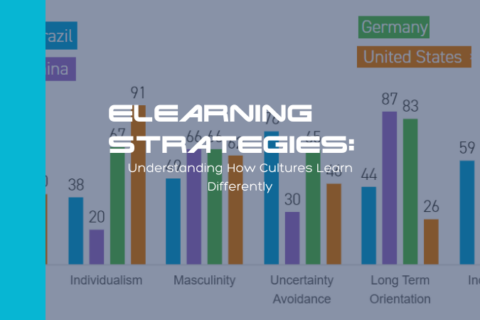6 Ways to Communicate with a Global Workforce
During this global crisis, many companies are struggling to communicate with their workforce and their global audiences. Here in Maryland, Governor Hogan announced that, “employees of non-essential businesses should immediately start working from home”. The suddenness of this directive has disrupted the productivity of many organizations, their operations, their employees, and their families. Not only is the challenge to quickly adapt to a remote workforce, but also the charge to effectively communicate with a global workforce and your target audience. After all, not only is communication and productivity affected in this new remote company structure, but also the effective dissemination of safety protocols and other communication. Fortunately, Global eLearning has years of experience translating and localizing content for a global audience and we offer these tips on how we have been adapting to communicate with our own workforce.
Compass Languages is a small company (22 employees) with a unique diversity of remote and global members. Normally, nine of our 22 employees work from our office headquarters in Annapolis, Maryland. However, the large majority of our workers work remotely in other states (4), or even in other countries (9). Though more than 50% of our workforce has been remote for years, the impact of dispersing those in the main office was/is an adjustment.
Most business leaders have learned a truth as to what separates “great” leadership from mediocre. The answer is not mastery of business fundamentals, innovative strategic thinking, or clever financial management. It is clear communication. For many of us, and full disclosure I am from the Boomer generation, this skill is best demonstrated in F2F encounters and in-person group gatherings. The ability to feed off non-verbal facial expressions and adapt mid-stream to rising/falling energy in a meeting room is key to this strength.
Now, our workforces are remote and yet, this change has required even further changes in the way we interact and communicate. Here are some thoughts from my staff on how to overcome the communication gap inherent in remote working situations:
- Messaging instead of emailing. Instant messaging platforms (e.g., Skype, Instagram, Band, etc.) make communication within distinct groups seem more personal and certainly can be executed faster. Teams within our company are constantly chatting through these media types. Email is monitored, social media much less so. Therefore, conversations are more spontaneous and expressive.
- Phone calls. After a decade or so of refusing to pick up an outside call because of constant solicitations, working alone may be changing our attitudes. In the past week or so of isolation, I am craving conversation. I answer every call and look forward to hearing a voice on the other end. Some of my colleagues have understood for a long time that calling me instead of emailing is highly effective in getting much-needed passion and emotion back into our conversations. We encourage you and your team to pick up the phone, when possible, to sustain necessary communication and verbal cues. This is also important with client interactions.
- Video Conference Calls. Depending upon internet connection speed and the platform used (Zoom, Webex, Chime, Skype, etc.), this experience can be quite good. Not quite the same energy readings as a co-located physical meeting, but seeing 8-10 live-feed faces at the same time on a laptop screen is the next best thing. Our Production team meets weekly – 12 people from 5 countries. Zoom allows up to 100 people but restricts to 40 minutes unless you pay extra.
- More Listening. Effective conversations will take a little longer when not F2F. The non-verbal portion is missing, or is altered (video calls), so that more time is necessary to understand another’s perspective. Ask more questions in these conversations. Listen carefully and ask others to explain their emotional attachment to ideas and solutions – since you can’t see it in their eyes!
- Compassionate leadership. These are chaotic times. COVID-19 is not only making us work from home, but our children are forced to be home as well. It is difficult to be 100% productive. There is stress associated with being isolated, already piled upon the fears of getting a disease, being laid off, and/or seeing my 401K become a simple 1K in value. Company leaders need to encourage continued productivity but be also compassionate with the impact of life’s circumstances. Be clearly deliberate in expressing concern about emotional and physical well-being.
- Arrange intentional F2F time. In these days of social distancing, gathering in bigger groups is not permitted, but meeting one-on-one in an outdoor setting (trail, park, outdoor picnic area) is still possible. Certain discussions remain a necessity for a F2F conversation: warnings, responsibility changes, critical managerial adjustments, etc. Making time and even traveling for these sensitive conversations remain a stout leadership standard.
It is our hope that, by sharing our experience, you will be able to glean a few takeaways for your team. More importantly, if you are struggling to communicate with a global workforce or target audience and effectively translate and localize your content in native languages, then you have a resource – Global eLearning! We have been helping organizations communicate with a global workforce effectively for years and we are a leader in the Learning & Development industry.
Gary Schulties is the President of Global eLearning. Learn more about Gary!



